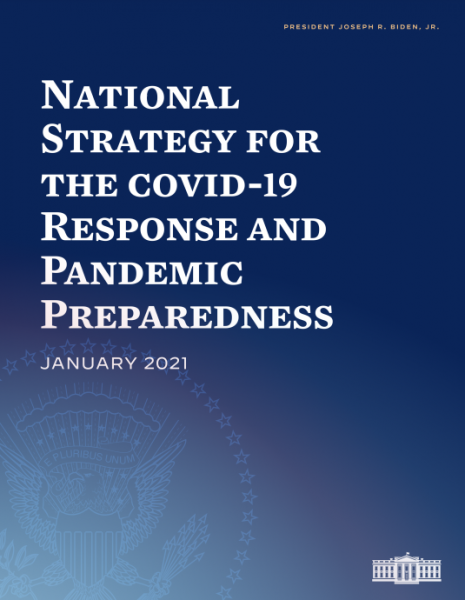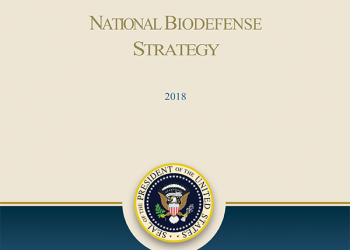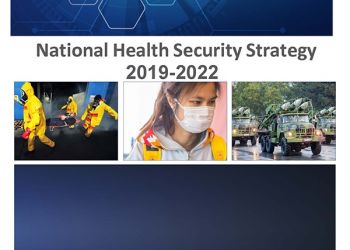The United States is continually confronted by a 21st century health security environment that is diverse, complex, and ever changing. It is a core responsibility of the Federal government to protect the American public from health security threats that range from emerging infectious diseases to natural disasters and other biological threats. Not only has the current Coronavirus Disease 2019 (COVID-19) pandemic illustrated the severity of biological threats, it has exposed vulnerabilities in the national security infrastructure and underscored the need for adaptable, reliable, and resilient medical and public health systems that enable effective response and recovery operations.
On January 21, 2021, President Joseph R. Biden, Jr. issued the National Strategy for the COVID-19 Response and Pandemic Preparedness (National Strategy) in an effort to provide a roadmap for Federal government actions to address the COVID-19 pandemic.1 The goals of the National Strategy are to:
- Restore trust with the American people.
- Mount a safe, effective, and comprehensive vaccination campaign.
- Mitigate spread through expanding masking, testing, data, treatments, health care workforce, and clear public health standards.
- Immediately expand emergency relief and exercise the Defense Production Act.2
- Safely reopen schools, businesses, and travel while protecting workers.
- Protect those most at risk and advance equity, including across racial, ethnic, and rural/urban lines.
- Restore U.S. leadership globally and build better preparedness for future threats.
Furthermore, a number of COVID-19-related Presidential executive orders have been issued to strengthen pandemic preparedness, mitigation, response, and recovery efforts.3 These executive orders focus on the following priority areas:
- Mitigating the health inequities caused or exacerbated by COVID-19.
- Accelerating the development of novel therapies to treat COVID-19.
- Securing supplies necessary for responding to the pandemic and developing a strategy for a resilient and sustainable medical supply chain.
- Updating guidance on worker safety and protection.
- Engaging with international partners to strengthen the global response to COVID-19.
The COVID-19 pandemic has demonstrated that there are areas for improvement across our national strategies and has emphasized how crucial collaboration is between the Nation’s communities and stakeholder networks. The American public leans on the Federal government to develop robust national preparedness and response capabilities that will effectively tackle the next pandemic or health security threat.
In addition to addressing the current pandemic, the federal government is also taking steps to advance the nation’s capabilities to effectively respond to future pandemics or high consequence biological threats. The American Pandemic Preparedness Plan
is a strategic plan focused on directing federal actions to strengthen national pandemic preparedness.4 This plan is a core element of the Biden-Harris Administration’s strategy on biodefense and pandemic readiness and is critical to the transformation of the Nation’s capabilities to protect its residents.
“The United States must fundamentally transform its ability to prevent, detect, and rapidly respond to pandemics and high consequence biological threats. This would include investments in critical scientific goal areas—vaccines, therapeutics, diagnostics, and early warning—as well as associated investments in strengthening disease surveillance, health systems, surge capacity, personal protective equipment (PPE) innovation, biosafety and biosecurity, regulatory capacity, and global pandemic preparedness.”4
The review and development work underscored in the American Pandemic Preparedness Plan has been organized into five pillars: 1) transforming medical defenses; 2) ensuring situational awareness; 3) strengthening public health systems; 4) building core capabilities; and, 5) managing the mission.4 Categories within these pillars address topics such as vaccines, real-time monitoring, stockpiles, supply chains, and global coordination. The plan will help to inform the Administration’s strategy on biodefense and pandemic readiness.
This article is the fifth in a series of articles aimed to provide education regarding key national health security concerns such as new and evolving 21st century health threats, federal government mitigation strategies used to support state, local, tribal, and territorial authorities, and future health security priorities.
Please continue to follow this topic series as we further cover the following features of national health security concerns and corresponding mitigation strategies:
- Looking to the Future: Informing Development of the 2023-2026 NHSS
1. The White House. January 2021. National Strategy for the COVID-19 Response and Pandemic Preparedness. Retrieved on October 28, 2021, from https://www.whitehouse.gov/wp-content/uploads/2021/01/National-Strategy-for-the-COVID-19-Response-and-Pandemic-Preparedness.pdf
2. U.S. Department of Homeland Security, Federal Emergency Management Agency. Defense Production Act. Retrieved on October 28, 2021, from https://www.fema.gov/disaster/defense-production-act
3. The White House. Presidential Actions – Executive orders. Retrieved on October 28, 2021, from https://www.whitehouse.gov/briefing-room/presidential-actions/
4. The White House. September 2021. American Pandemic Preparedness: Transforming Our Capabilities. Retrieved on October 27, 2021, from https://www.whitehouse.gov/wp-content/uploads/2021/09/American-Pandemic-Preparedness-Transforming-Our-Capabilities-Final-For-Web.pdf?fbclid=IwAR2RfWqBfdI6ZcrXUPmA8JfveVxXB33zv6lav4vJ5xqSq30a3XXU2WPAJn0



